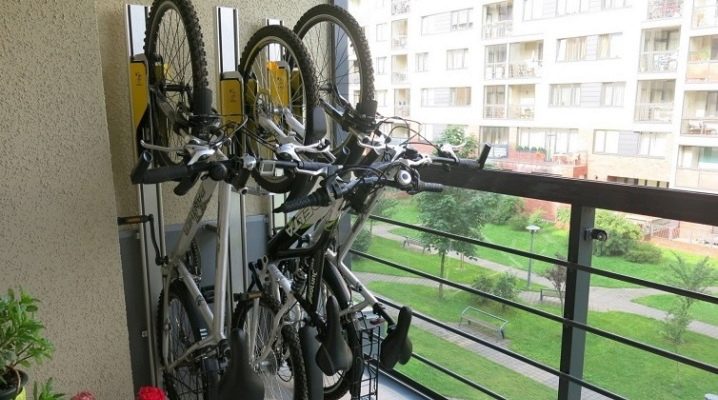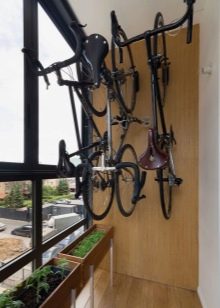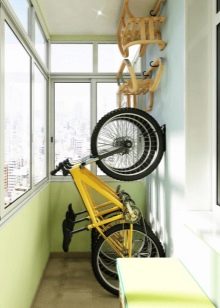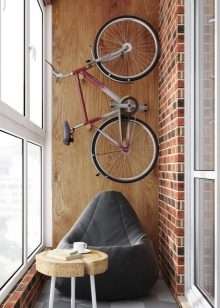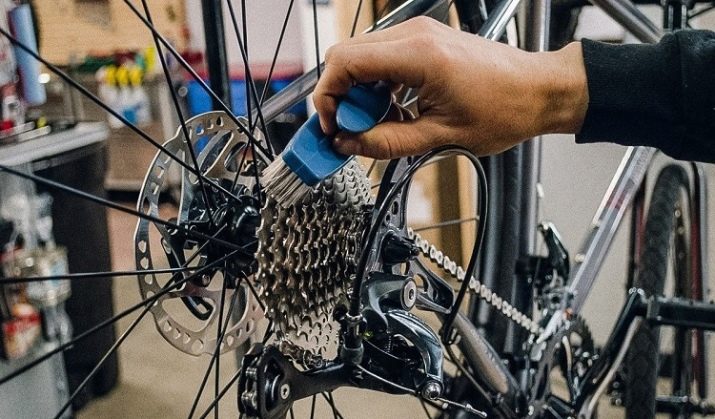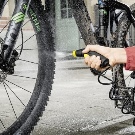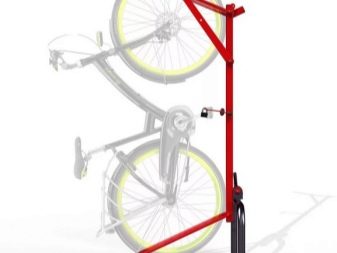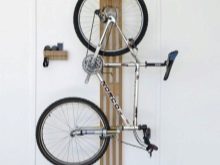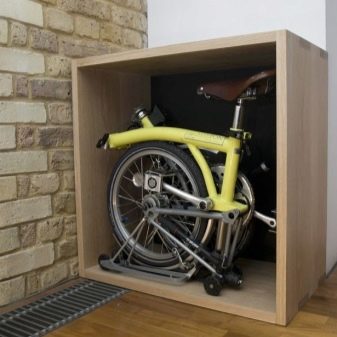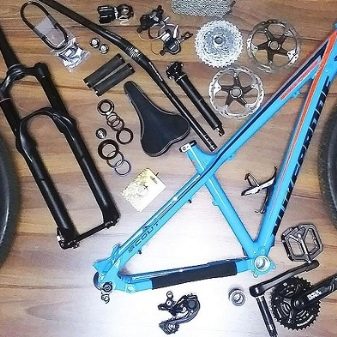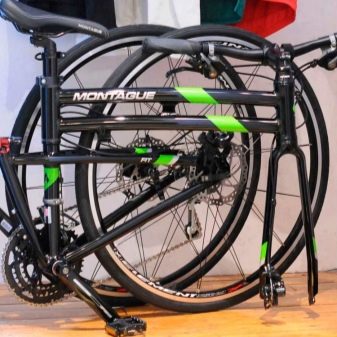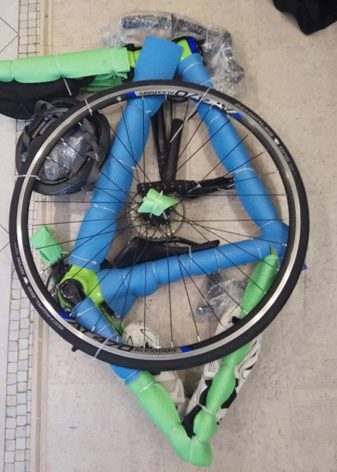Bicycle storage on the balcony and loggia
With the onset of cold weather and the end of the cycling season, the issue of bicycle storage becomes especially acute. Inside the apartment there may not be a place for it, and very few people want to spoil the interior with an iron structure. In this regard, balconies and loggias are the best storage places, the main thing is to correctly position the bike and comply with a number of requirements.
Primary requirements
A bicycle, like any other equipment, needs proper storage. Therefore, its placement on the balcony requires the creation of favorable conditions.
- A glazed, albeit unheated, balcony is well suited to accommodate a vehicle. The lack of glazing creates outdoor conditions, and you cannot leave the bike outdoors for the winter.
- It is necessary to ensure that precipitation and melt water from the roof do not fall on the metal parts of the structure.
- On a cold loggia, the bike must be reliably protected from direct exposure to ultraviolet radiation. Constant exposure to sunlight destroys rubber and plastic elements and spoils paint. To do this, the technique is placed in a dark corner, covered with a waterproof cloth or thick paper.
- The optimal conditions for storing equipment are an air temperature of at least +5 degrees and a humidity of no more than 60%. Low temperatures negatively affect rubber and plastic, and high humidity leads to rust. At too high temperatures, for example, when placing a bicycle near heating radiators, the rubber parts begin to dry out and quickly deteriorate.
- Bicycle neighbors should be chosen carefully, taking into account their ability to accumulate or release moisture. It is not recommended to place transport near a clothes dryer and vegetables, especially potatoes and cabbage.
Among the advantages of storing your bike on the balcony are the following:
- guaranteed protection against theft;
- unlimited storage period;
- the ability to use at any time;
- availability of space for minor repairs and maintenance of the vehicle.
The disadvantages include a decrease in the useful area of the balcony, the need to protect equipment from the sun and moisture, compliance with the temperature regime, and inconvenience when cleaning the loggia.
In addition, special bicycle shoe covers are required to prevent contamination of walls and furniture with dirty wheels, which leads to additional costs.
How to prepare?
Before placing the transport on the balcony, it must be carefully prepared. At the end of the cycling season, it is recommended to carry out a full maintenance of all components and mechanisms, and to carry out a number of measures.
- The bike is thoroughly washed, wiped with a dry clean cloth and dried. For additional protection of the paintwork, it is rubbed with polish.
- Particular attention is paid to the presence of scratches and chips on the paint, and if damage is found, they are abundantly lubricated with anti-corrosion grease. If this is not done, problem areas can become rusty. It is also recommended to lubricate all chrome parts of the bike.
- The chain is set to the smallest sprockets, thereby weakening the transmission cables. Spring assemblies such as brake levers, pads and caliper must also be loosened.
- The chain is abundantly lubricated with silicone grease, passed with an oiler over the bearings, rear derailleur rollers, cables, front fork damping system, front and rear derailleurs and along the main carriage.
- In temperate climates, the inflated wheels are slightly lowered and lubricated with glycerin, and in frosty winters and an unheated balcony, the tires are removed and stored in a warm room. Otherwise, the rubber may crack and become unusable.
- The navigator and the bike computer must be unscrewed and the batteries removed.
- If there is a steel frame on the bike, it is coated with an anti-corrosion compound. This need is due to the ability of steel to become covered with condensate during sharp temperature fluctuations, which accumulates inside the frame and causes its corrosion.
- If the equipment will be stored on a cold balcony, it is wrapped with a synthetic film and placed inside silica gel bags. It absorbs excess moisture and prevents the metal from rusting.
- If the seatpost, handlebars and stem are made of carbon, it is recommended to loosen the mountings on them.
Choice of fixtures
To place a bicycle on a loggia, floor, wall and ceiling mounts are used.
-
Floor option is a stand that prevents the bike from falling. There are stands for the front wheel, for the rear hub, for the connecting rod and for the rear stays. You can also purchase a parking rack or a bike rack. The racks can be attached to the wall, or they can stand on the floor and resemble a clothes hanger equipped with two pairs of hooks. The advantage of such stands is ease of use and no need to drill walls and ceilings. Among the disadvantages of floor structures is the fact that a bicycle standing on the floor will take up quite a lot of usable space.
-
Wall fasteners allow you to free up the floor and make it possible to place several bicycles at once. They come in different types and are represented by brackets, hooks, rack holders, made according to the type of shelves. Hooks can be used not only for bicycles, but also for frames, tires, forks and rims, and in addition to transport, many other useful things can be placed on the shelf-holders. In addition, the shelves have a presentable appearance and fit well into the interior of the balcony.
A feature of wall-mounted brackets is the ability to accommodate two or more bicycles, which is especially valuable in a small apartment or in a “Khrushchev” building.
- Ceiling mounts allow you to place equipment under the ceiling and are of two types. The first ones are represented by a pair of hooks, on which the bike can be suspended using a stepladder. The second type is presented in the form of a lifting mechanism with a pulley system, which allows you to raise and lower the equipment using a cable. The disadvantage of most ceiling lifts is the weight limit - as a rule, it is 20-22 kg. In addition, on loggias with low ceilings, their use will be problematic.
How to hang?
You can mount your bike to the wall vertically and horizontally. Horizontal placement is preferred: it does not cause deformation of parts and difficulties in hanging / removing. In this position, the wheels are not in contact with the floor, and the rubber is better preserved. In addition, the bike in a horizontal position is quite static, the mounts and frame are clearly visible, and there is practically no risk of falling off the mount.
In order for the bike to take up less space when placed horizontally, its handlebars are slightly loosened and rotated 90 degrees. The pedals are also unscrewed and stored separately. When placed on small low balconies, two or three bicycles are suspended slightly at an angle. In this case, the wheels are placed close to the wall, and the frames are deflected from it at an angle of 25 degrees. In this case, bicycles can be placed one under the other - in two or three floors.
When placed vertically, the bike is suspended from a ceiling or wall using the front rim. At the same time, the rear wheel touches the floor, which, in conditions of negative temperatures, has a bad effect on the rubber.Once a month, to prevent deformation of the tire, the wheel is rotated slightly.
The advantages of vertical suspension include the simplicity of the fastening structures, when one strong hook is enough. Among the shortcomings, it is possible to note the difficulty of removing / hanging, which is especially important for heavy steel models.
How can you store it folded and assembled?
It is easiest to place folding bicycles for children and adults on the loggia. Their frames are equipped with a pivot block that folds the bike in half in 15 seconds. For more compactness, the handlebars are turned 90 degrees, the saddle is lowered to the stop, or removed with the seatpost. The pedals are unscrewed from the connecting rods, and inserted into the same sockets, turning them inward. If the equipment is to be placed in a small space, then the wheels can also be removed. You can hide the folded bike in a closet, under a table or in a rack on the balcony. Then it must be covered with a blanket or tarp.
Transport can be stored fully assembled. This method is used when placing non-folding models in spacious loggias, and in cases when a bicycle is used from time to time in winter. It makes no sense to disassemble in such a situation, so the technician is placed on a floor stand and a cover is put on.
Exploded view
It often happens that putting the bike on the loggia, even when folded and half-disassembled, is problematic. This applies to too cluttered small balconies. In such cases, the best idea is to completely disassemble the bike. It is allowed to store it in its original box, special container or case. In order to make the disassembled bike as compact as possible, the saddle, pin, steering wheel are removed from the frame, the pedals are unscrewed, the fasteners for the bicycle bottle and pump are removed, the trunk, reflectors are unscrewed and both wheels are removed.
In order not to lose the fastening bolts, they are screwed into place, but do not tighten too much. Then the stem, the connecting rods and the ends of the forks are wrapped first with packaging film, and then with cardboard. This protects the protruding parts of the structure from damage.
The best way to store it for a long time is to pack the dismantled bike into a hard, specialized case. In this case, the structure is completely disassembled, not forgetting to disassemble the bushings and cassettes, as well as remove the plug, chain and switches. In this state, the bike will take up a minimum of space and can easily fit even on the smallest balcony. At the same time, it is better not to leave rubber and leather elements in the case, but to remove them to winter in the warmth. This includes grips, tubes, tires and saddle. They are placed in a bag and put away in a closet.
It should be noted that this method is only suitable for long-term storage of bicycles, since the process of complete disassembly requires special tools, is rather lengthy and painstaking.
